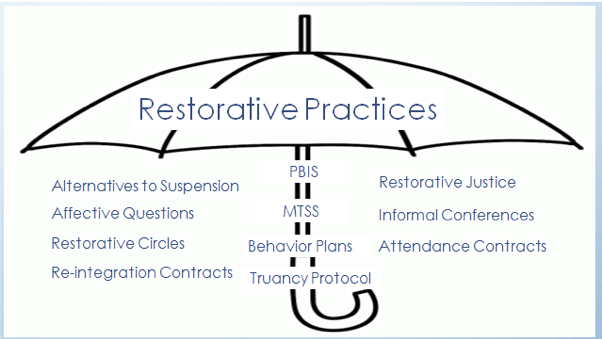…what restorative practices in schools look like?
Download
More and more schools are looking towards restorative practices (RP) as an alternative approach to resolving discipline issues. Restorative practices focus on rebuilding relationships that have been harmed or broken by giving both the person who has been harmed and the person who did the harm a voice in the resolution process. When all sides are equally heard, it is more likely that the resolution will be seen as fair and constructive by those involved. Given the importance of positive and supportive relationships for students' physical and emotional safety as well as academic success, schools are using RP both proactively (to build positive relationships among students and between students and teachers) and reactively (to rebuild relationships after a discipline incident has occurred). RP in schools looks like this:
| Proactive Practices (Tier 1) | Active listening | Validate, Empathize, Clarify, Summarize |
|---|---|---|
| Affective language | Tell students how a behavior makes you feel. | |
| Reframing | Replace loaded or negative language with neutral language | |
| Proactive Circles | Give everyone a forum to voice their opinions | |
| Reactive Practices (Tiers 2 And 3) | Informal restorative conversations | Ask questions to find out what happened |
| Responsive classroom circles | Discuss why frequently occurring minor misbehavior keeps re-occurring. | |
| Formal restorative conferences | Find resolutions to severe misbehavior. |
RP is a set of practices that can be aligned with other multi-tiered support systems, such as positive behavior interventions and supports (PBIS). Most importantly, RP is an alternative to exclusionary discipline and is intended to promote social-emotional learning, positive relationships, and increased access to academic instruction.
